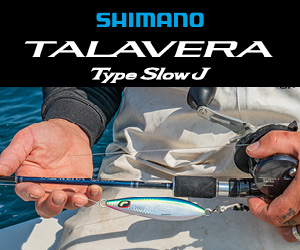Whether it’s a broken rod, wind knots, or a cracked guide, it’s all part of the game. We can all agree that it’s better to go into the game prepared.
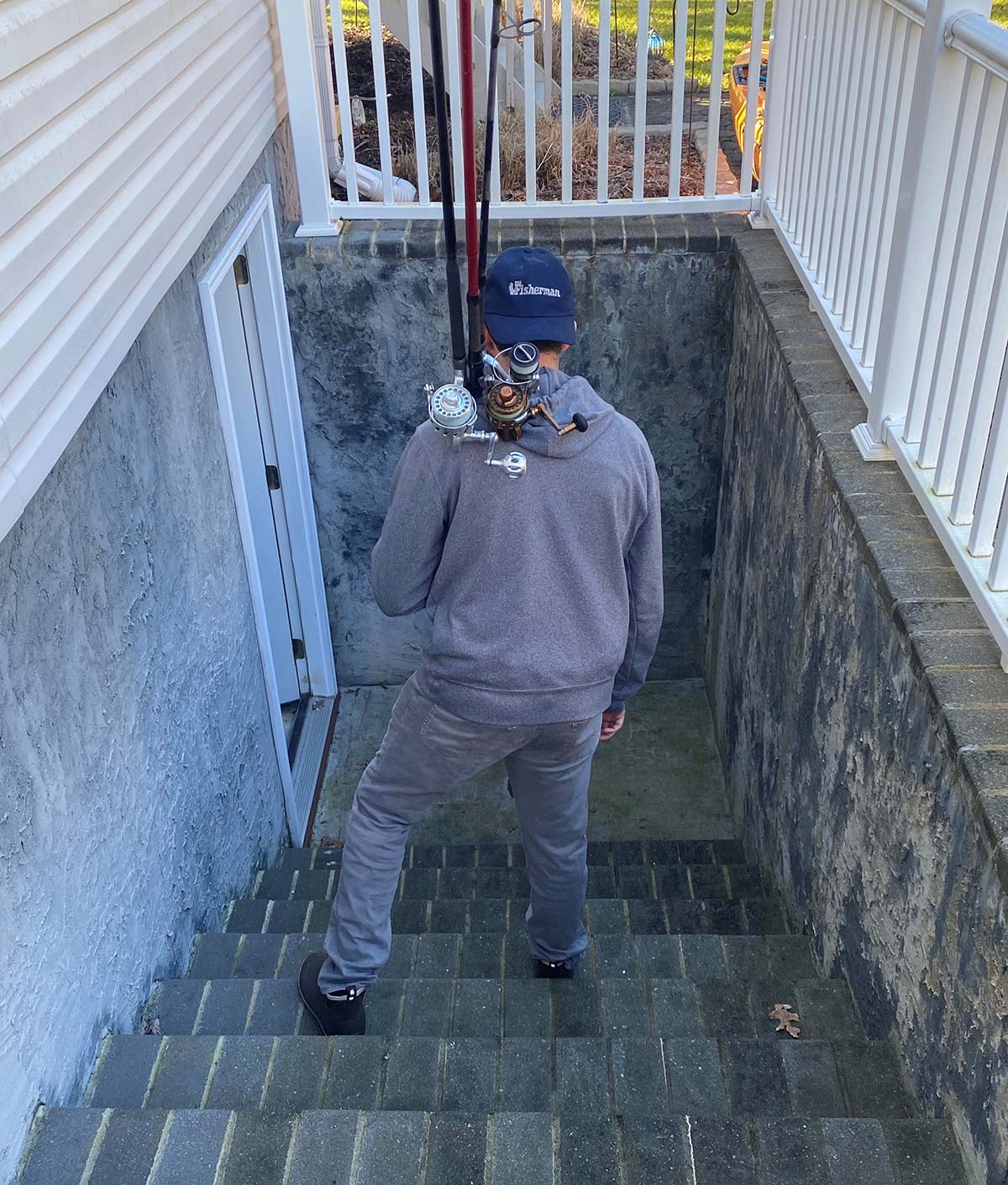
The off-season, the part of the year that we dread so much. I got my start in fishing by surfcasting and I can tell you that I, along with many others always keep the thought of the off-season in mind during the duration of the actual season. As those cold months approach and the season nears its end those thoughts pop up more and more often. What am I going to do for those long cold months?
Sometimes they really seem to linger on. Some surfcasters pick up other types of fishing during the winter. I find myself targeting trout, white perch and even hopping on party boats to target deep-sea species. Others like to take a break from fishing to focus on other stuff. One thing we all need to do is make sure all of our gear is in order.
I’m here to tell you that being a surfcaster, you can take many steps during this time of the year to ensure that your next one goes smoothly, at least to start off. Remember were fishing here, things inevitably will go wrong at some point. Whether it’s a broken rod, wind knots or a cracked guide, it’s all part of the game. We can all agree that it’s better to go into the game prepared.
Playing Hooky
Well, I never played hooky in school since I was a good kid but after becoming a surfcaster I found myself playing hooky quite often. No, I don’t mean staying home from work to go fishing. What I’m referring to is me becoming a master with a pair of split ring pliers. Yes, this tool is golden for a surfcaster. Once heavy into this sport you will realize that swapping out hooks becomes a normal chore. Either replacing rusted ones or upgrading for stronger ones. In rare cases, changing out bent ones that were mangled by a monster striper.
A lot of this is done in the off-season for me. Typically during the season, I don’t always have the most time, so this task can fall to the bottom of the list. The hooks getting swapped more often are the ones in my regular rotation. I build up a pile of damaged soldiers through the course of the year that require medical attention during the winter months.
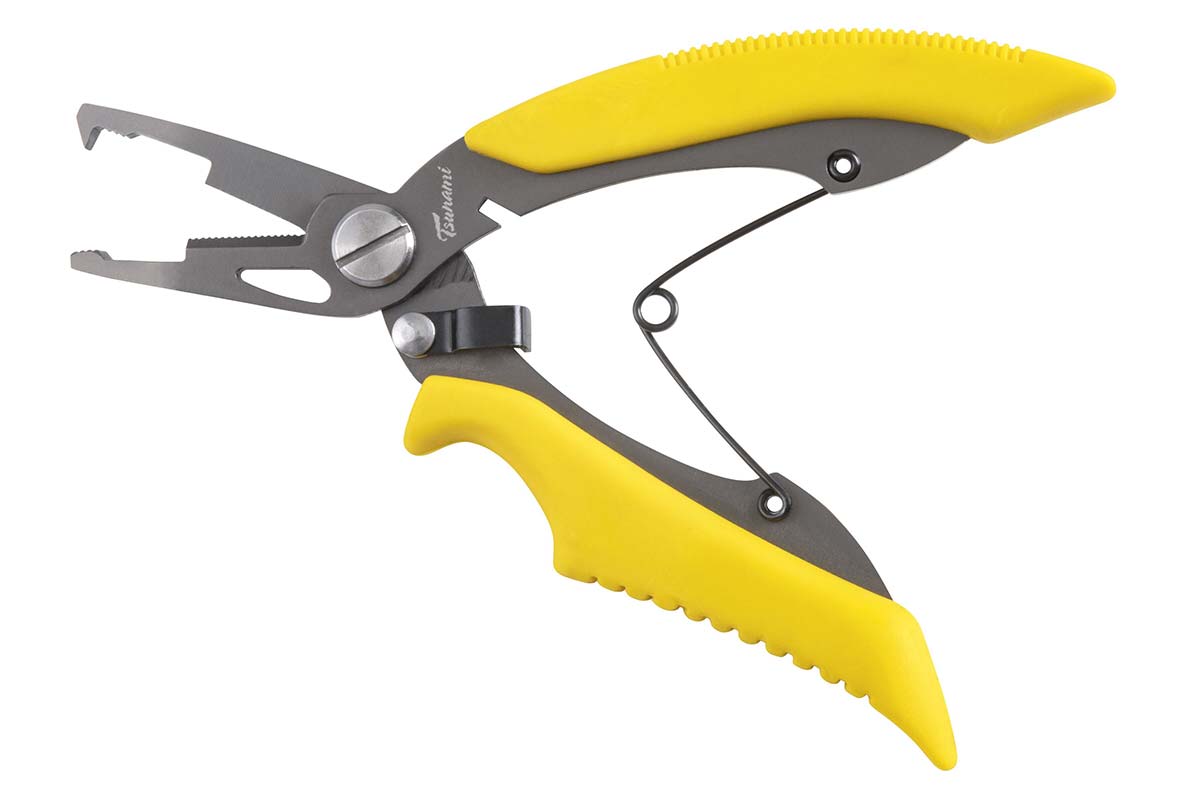
As previously mentioned, you will become quite handy with a pair of split ring pliers. Do yourself a favor, and don’t buy a garbage pair. The proper pair of split ring pliers with save you the headache. One of my favorites is the Tsunami Braid Cutter/Split Ring pliers. This model is easy and comfortable to use. Many other companies offer the same style under their name which works too. This is the first step to hook changing. The next is going through what has to be changed and determining the size and quantity of hooks to purchase. Personally, I buy hooks in bulk. Surprisingly you will go through them faster than you think. After you start doing this you’re going to get a gauge on what is needed to fix your arsenal.
For me, I buy bulk in sizes 1/0, 2/0, 3/0 and 4/0. These sizes cover all the plugs I use for surfcasting. Once in a while ill double down on the 3/0 size. They become my most popular swap. In some cases, I’ll buy quantities of 6x strong hook for certain scenarios. These are some seriously strong hooks that take an awful lot of pressure to bend out.
The one question I’m always asked is how much corrosion or rust do you let build upon a hook before changing it. Well if you’re unsure, chances are it needs to be changed. It’s good to be safe than sorry. I’m guilty of letting hooks go a little too far at times and it’s defiantly an uneasy feeling when you hook into a nice fish. Start the season with some fresh hooks. Fresh hooks, fresh season; that’s the way I like to look at it.
One last thing to keep in mind when changing hooks is split rings. Both hooks and split rings go hand in hand. While certain plugs already come equipped with sufficient split rings, others don’t. Now sometimes bad split rings are the only thing between making a decent plug great. I’ve seen factory equipped split rings bend out way too easily. When purchasing hooks over the winter I like to buy a variety pack of strong split rings. Wolverine and Roscoe are two companies that I’ve used before and had no problems with. Both hooks and split rings go hand in hand.
Reel Talk
Once the hooks on my plugs are in order I eventually make my way to the machines that crank them in. As a caster, we are nothing without our reels. Unless you use a Cuban Yo-Yo, then kudos to you.
I noticed the worst thing for reels is to let them sit for an extended period of time without cranking them. On several occasions, I’ve put reels down on my workbench that seemed to work fine and picked them up months just to discover they are stiff. It’s like an old car. The more you use it the better it will run. A machine left to sit breaks down. The lubricants start to solidify leading to stiffness in your equipment. At some point earlier on in the winter either service your reels or take them to your local tackle shop to do so. Remember it’s the slow time of the year for them so they can use the business.
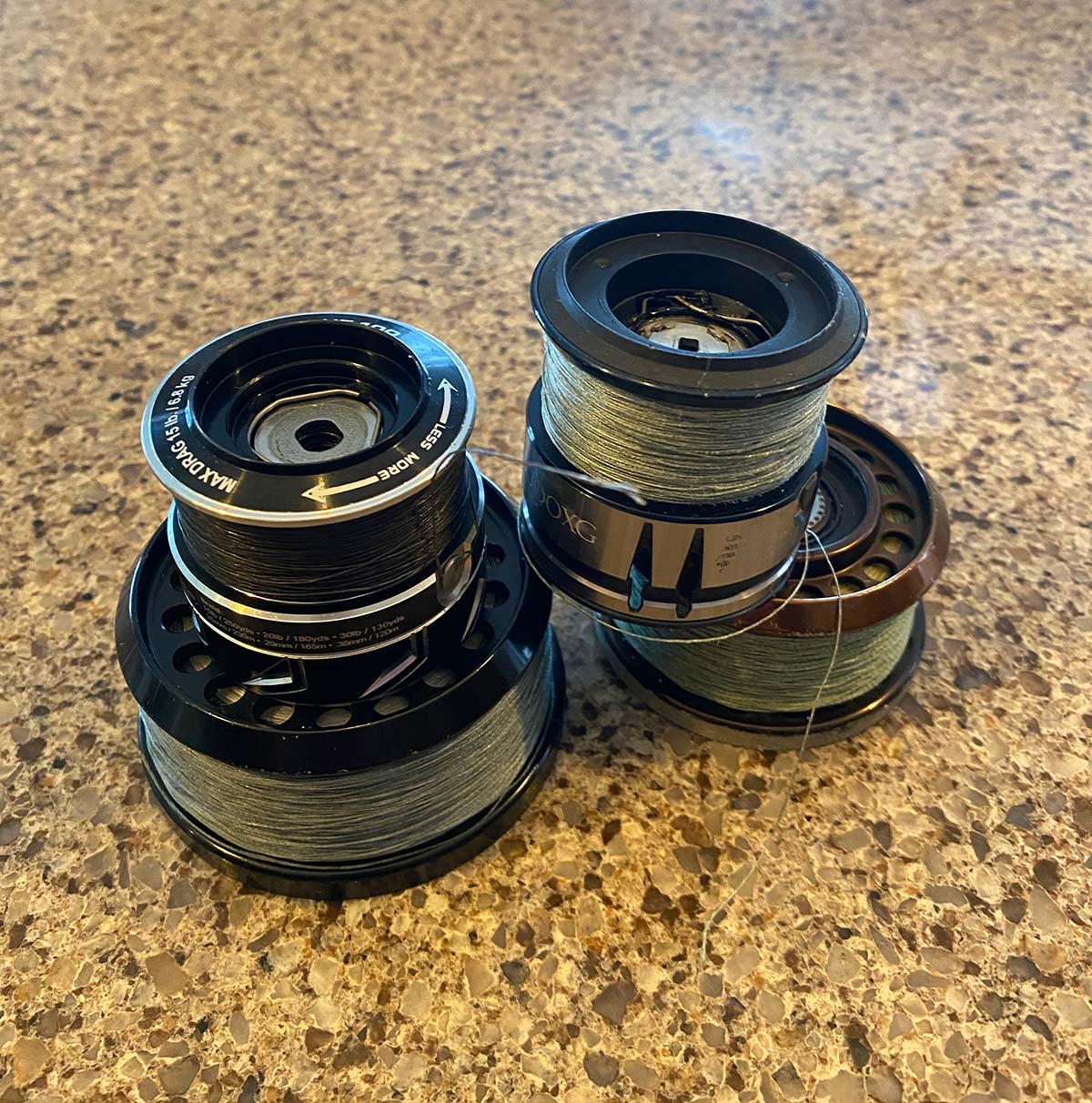
Along with the same topic of reel maintenance is paying attention to the line on your reel. Keeping track of when you put fresh line on a reel and the yardage put on is important. Braid has different properties than monofilament. It has no memory so the line can be left on a spool for long periods and it won’t coil up when it comes off. Also, the shelf life of the braid is much longer than mono. Braid does not break down from sitting in the sun. This means that you don’t have to change the braid as often. I’ve ran some braids on my reels for up to 2 years. Some anglers keep it on even longer. It depends on how much you use it.
Another factor to keep in mind is the type of structure you fish. Of course, if you fish the rocky South Side of Montauk Point your braid will develop wear much quicker than if you fish a sandy beach. Another thing I want to bring up is flipping your braid. This is done with a professional line winding machine. I’m going to try and make it simple for you. Most casts in perfect conditions don’t top 100 yards and if you have 300 yards of line the braid deepest in your spool will never leave it. Even if you hooked a big bass at the end of your cast that fish isn’t going to run as far as you think. So the truth is you have at least half a spool of untouched braid on your reel. Considering that braid doesn’t break down this is still good line.
When I feel that the top half of my braid has seen enough use ill bring it to a shop for flipping to the unused side. This saves you a lot of money considering the price of the braided line. Usually, the fee for this is very cheap and ill even throw the employee doing the job a couple of bucks for coffee. I can’t tell you how many times I’ve seen people insist I replace all of the lines on their reels even though more than half was unused during my shop days.
Guidance
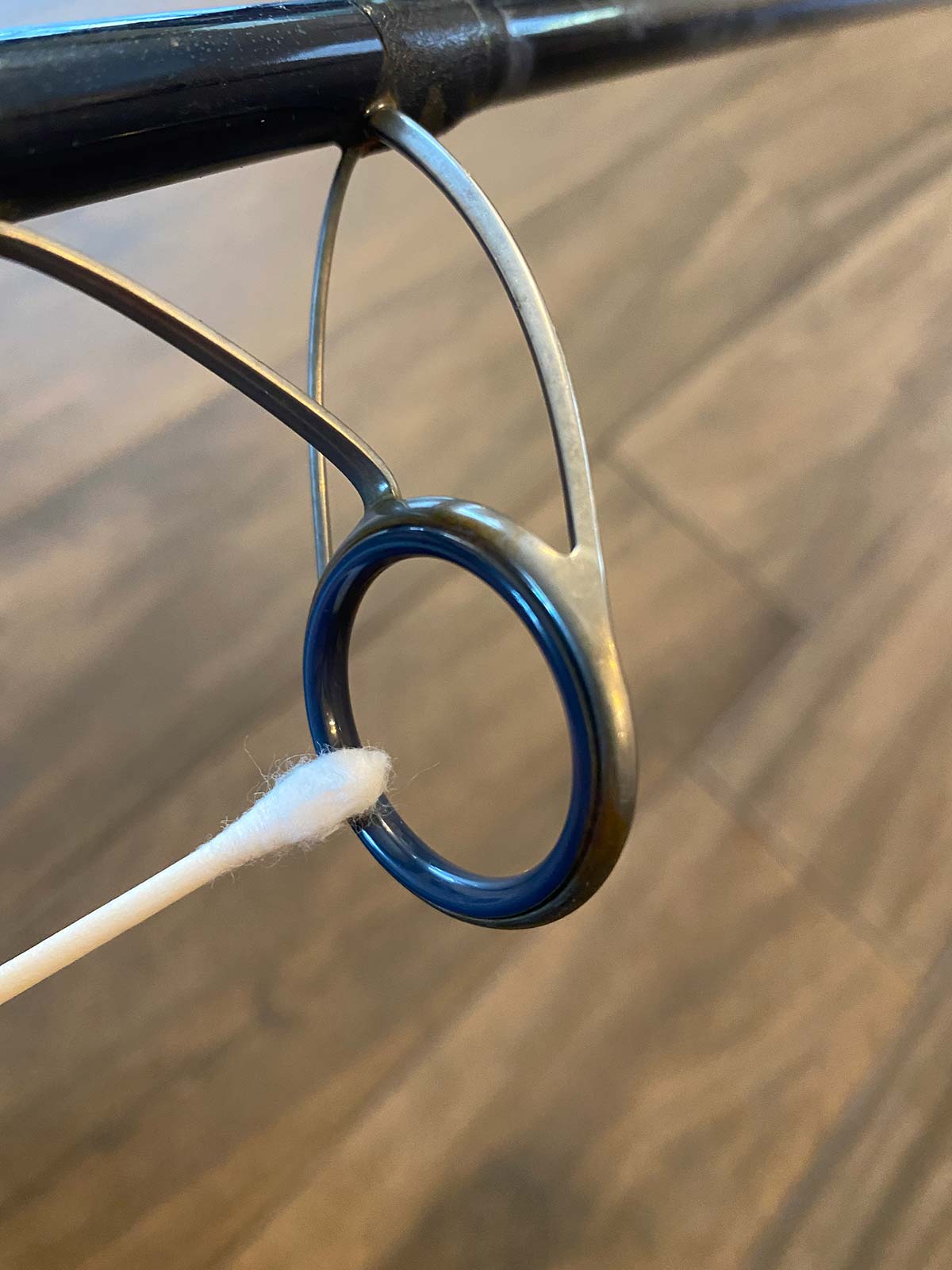
The one other piece of equipment a surfcaster can’t go without is his surf rod. Of course, the reel is nothing without the rod and the rod is nothing without the reel. The two things together make us who we are. I can say that the rod is defiantly neglected more than the reel. I guess that’s because it is much easier to detect a problem with a reel over a rod. Unless your rod explodes on a cast. Then the problem is obvious. What I’m trying to get at here is paying attention to the guides on your rod.
The guides can make or break your trips and can cost you a lot of money in snapped off lures when they develop a crack. Sometimes the smallest of cracks will snap off plug after plug. This can be extremely frustrating but fortunately, the chances of this happening can be cut down by checking your guides. This is an easy activity to do in the offseason on all of your rods.
You can do a quick visual inspection for a big crack and then use a cotton ball or swab for a more thorough check. If the cotton gets hung up on any part of the guide, chances are it has a crack. Once a crack is located it should be marked off with a piece of tape. After you get through your rods and determine what needs attention versus what doesn’t it’s time to make a decision. Support the local shop that does rod repairs or embark on the mission yourself to repair it at home. The second option is much more in-depth but if you’re willing to get into the craft it’s a skill you won’t forget, plus it will always come in handy when you need to make a repair in a pinch.
After surfcasting for many years, I developed this offseason ritual. It helps the start of my next season go much smoother. Of course, everyone has their way of going about things but this way works for me. The order is not important in which you do them but getting all the off-season tasks done is. Preparation is key for fishing. During the season and after the season. It puts you on the trail to success.
